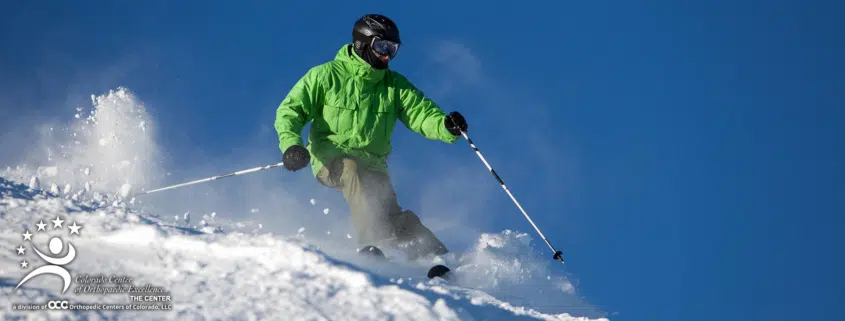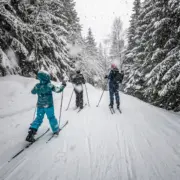There’s Still Time for a Pre Ski Season Workout Routine
While we wait for it to snow in Colorado, start a pre ski season workout plan to put you on track for a great year on the slopes. Ski season is technically underway, but there’s still time to help prepare your body for a winter full of fun and free from injury.
As winter schedules and temperatures push us indoors, it’s common that physical activities give way to the work and social commitments of the season. Muscles used during the summer can become idle and a decline in activity can reduce flexibility. Now is a good time to think about a pre ski season workout. Just as your skis benefit from a pre-season tune-up, so will your muscles.
3 Key Elements of a Good Pre Ski Season Workout
Your workout should include aerobic activity, strength training, and stretching that promotes flexibility. The best exercises for skiing are compound exercises that blend stretching with rotation such as lateral side jumps or rotational lunges. These exercises use your quadriceps, hamstrings, and glutes – the muscular foundation of ski movements.
A six to eight-week-long pre ski season workout plan offers optimal training, but your muscles benefit from each week of multiple-day training that your schedule allows, so it’s not too late to start.
Exercise routines, like people, vary, and finding the right workout for your body is important. Check with your physician to identify the best cadence and level of rigor that’s right for you. The trained professionals at the CCOE Sports Performance Center can help you get ski ready to get the most of your time on the slopes.
Three examples of the best ski exercises for a pre ski season routine are: a.) squat and reverse lunge, b.) forward lunge with torso rotation and c.) lateral side jumps.
The squat and reverse lunge simulates the core ski movements while strengthening the muscles most commonly used on the slopes (glutes, hams, quads).
- The exercise begins with feet shoulder-width apart in a ready position.
- The first portion of the exercise is a basic bodyweight squat: Beginning from a standing position, bend at both knees to lower your body as if you were sitting down on a stool and return back to a standing position.
- From the returned standing position, reach your right leg back into a reverse lunge (keeping your left knee above and not ahead of your ankle) to form a 90-degree angle with the floor.
- Return to the ready position. Do ten repetitions, switch to other leg, and complete ten more.
The forward lunge with torso rotation also employs ski-influenced movements to promote muscular flexibility and leg strength.
- The exercise begins in basic standing position.
- Step forward with your left foot into a lunge that positions your knee at a 90-degree angle to the ground. Keep your knee directly above and not ahead of your ankle.
- As you complete the lunge, rotate your torso and clasped hands (as if holding a coffee cup with both hands) 45-degrees to the left. Stand and return to center prior to mirroring the exercise with the right foot and corresponding torso twist to the right.
- Complete ten lunges/rotations on each side.
Finally, lateral side jumps mimic ski motion while building balance and isolating individual leg muscles and your core.
- This exercise begins with both feet standing ten inches to the right of a parallel line created on the floor (string, piece of tape, length does not matter).
- Looking straight ahead, jump sideways to the left over the line, land, plant, and propel your body back over the line to the right side to land where you began. Repeat 20 times.
A good pre ski season routine will help you prepare for the thrill of the slopes with friends and family. Skiing should be a welcome break from daily stress, not a source of additional stress or strain. By getting in shape now, you can help guard against injury and ensure that you get the most of your ski season this year.


